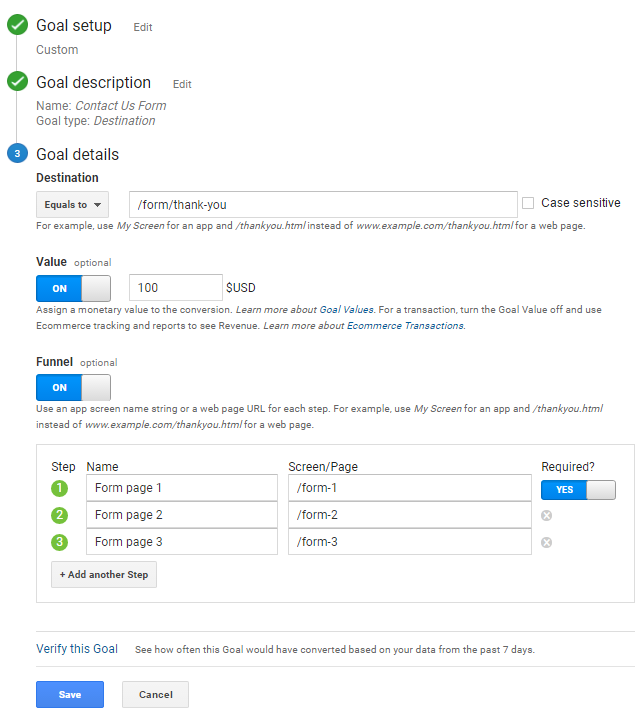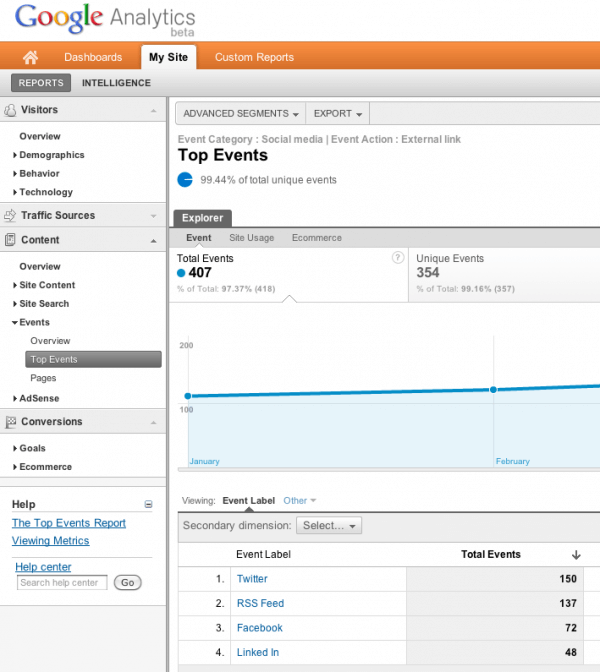What Data Is Google Analytics Goals Unable to Track: Find Out the Limitations
What Data Is Google Analytics Goals Unable to Track: Find Out the Limitations
Blog Article
Discover the Limitations of Google Analytics Goals: Revealing the Information Types That Remain Untrackable
As businesses progressively rely on data-driven decision-making, understanding the limitations of devices like Google Analytics comes to be vital. While Google Analytics Goals deal valuable understandings into customer interactions, there exist information types that avoid tracking, positioning difficulties to a detailed understanding of individual habits.
Insufficient Individual Journey Tracking
Incomplete customer trip tracking within Google Analytics can hinder the capability to precisely evaluate individual habits. When the individual trip is not completely tracked, there are voids in the data that protect against a comprehensive understanding of just how users communicate with a web site. This absence of insight can cause missed out on chances for optimization and improvements to the individual experience.
One usual issue with incomplete individual journey monitoring is the lack of ability to see the full path that individuals take in the past finishing an objective or leaving the site. Without this details, it is testing to determine where users might be running into barriers or rubbing points that avoid them from converting. Furthermore, insufficient monitoring can obscure the influence of particular advertising efforts or site modifications on user habits.
To address this constraint, it is crucial to establish proper tracking mechanisms within Google Analytics to capture the whole user trip. This might include establishing event monitoring, objective funnels, or making use of devices like Google Tag Manager to guarantee that no vital interactions go unrecorded. By getting a detailed sight of the user journey, web site proprietors can make more enlightened choices to improve user engagement and drive conversions.
Acknowledgment Challenges
Browsing via attribution challenges in Google Analytics requires a comprehensive understanding of just how different touchpoints add to the general conversion procedure. Attribution difficulties occur from the complexity of modern-day client trips, where customers interact with several channels prior to transforming. Google Analytics gives different attribution versions like initial touch, last touch, and direct, each supplying a different viewpoint on how credit is designated to touchpoints along the conversion path. These models may not always precisely reflect the true effect of each touchpoint on the conversion.
One common attribution challenge is the trouble in connecting conversions to the right resource, especially in cases where customers communicate with multiple channels prior to transforming. This can cause mistakes in figuring out which advertising efforts are driving the most conversions. Additionally, cross-device monitoring presents an additional attribution difficulty, as individuals frequently switch in between tools during their trip, making it testing to track their interactions perfectly. Online marketers must carefully analyze and interpret attribution information to make informed choices and enhance their marketing strategies properly.
Offline Conversions
Provided the challenges connected with connecting conversions precisely in online channels, the dimension of offline conversions offers a considerable opportunity for marketing professionals looking for a much more thorough understanding of their clients' trip. Offline conversions refer to activities that consumers take in the physical globe, such as making purchases in brick-and-mortar stores or over the phone, going to occasions, or involving with published products - what data is google analytics goals unable to track. These conversions are vital for businesses that operate both online and offline, as they provide important understandings into the performance of advertising projects throughout numerous touchpoints
Tracking offline conversions typically presented a significant difficulty for marketers, as it was challenging to link these activities back to specific online interactions accurately. Nevertheless, with advancements in technology, such as the combination of CRM systems, special identifiers, and coupon codes, companies can now link the gap between online and offline data to gain a much more alternative view of customer habits. By effectively gauging offline conversions, marketing experts can maximize their techniques, allocate resources a lot more effectively, and eventually enhance the general customer experience.
Cross-Device Tracking
Cross-device monitoring plays a critical role in comprehending the interconnected nature of customers' electronic communications throughout several tools. In today's omnichannel world, where customers seamlessly change between smartphones, desktop computers, and tablet computers, tracking their actions throughout these gadgets is important for marketers to get a comprehensive view of their consumer journey.

Additionally, privacy problems and regulations such as GDPR and CCPA have even more challenging cross-device monitoring. With customers requiring even more control over their data and boosted constraints on tracking technologies, online marketers must find privacy-compliant and cutting-edge methods to link individual communications throughout tools.
Dynamic Material Engagement
Understanding individual engagement with dynamic web content is pivotal in maximizing electronic advertising and marketing methods for improved audience interaction. Dynamic web content refers to web site elements that transform based upon customer actions, preferences, or various other factors, providing a customized experience. However, tracking user communications with vibrant content presents obstacles for typical analytics devices like Google Analytics.
While Google Analytics can track basic communications like clicks and page sights, it might struggle to record more nuanced engagements within dynamic web content. what data is google analytics goals unable to track. Metrics such as time invested on specific vibrant aspects, view it float activities, or interactions within pop-ups are commonly not quickly quantifiable using standard monitoring methods. This restriction impedes marketers' capacity to fully realize how customers are read the full info here engaging with vibrant material and customize their techniques as necessary

Verdict
Finally, Google Analytics goals have constraints in tracking incomplete individual trips, connecting conversions precisely, capturing offline conversions, tracking cross-device interactions, and determining vibrant content engagement. These restraints highlight the importance of checking out extra monitoring approaches and tools to acquire a much more detailed understanding of user habits and conversions beyond what Google Analytics can offer.
While Google Analytics Goals offer beneficial insights into user interactions, there exist information kinds that thwart monitoring, posturing challenges to a detailed understanding of individual habits.Incomplete customer journey monitoring within Google Analytics can prevent the capacity to properly examine individual habits. When the customer journey is not totally tracked, there are voids in the data that stop a thorough understanding of just how individuals engage with a site.One typical problem with incomplete user trip monitoring is the failure to see the full course that users take in the check past finishing an objective or leaving the site. By gaining a comprehensive sight of the individual journey, internet site proprietors can make more informed choices to improve user involvement and drive conversions.
Report this page